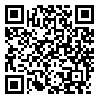BibTeX | RIS | EndNote | Medlars | ProCite | Reference Manager | RefWorks
Send citation to:
URL: http://rjms.iums.ac.ir/article-1-1785-en.html
The present investigation aimed to study the role of insulin on stress-induced behavioural responses.
Male albino-Weitar rats (200-300 g) were implanted with microdialysis probes in the lateral ventricle under chloral hydrate (500 mg/kg i.p.) anaesthesia. 12 hours after implantation animals were placed in a bowl. The implanted animals were perfused at 2 pi/min with ringer solution. 5 min tail pinch is applied for control group. In the sham group ringer solution were perfused via micro dialysis probes while the tail pinch (5 min) stress is performed. In one experiment, for the test group insulin (5 IV/Kg s.c.) was used, In another set of expenment, for the test group insulin (5 IU/Kg) was added to the ringer solution. The tail pinch induced behavioural responses were observed in all experimental groups. For validation of tail pinch as a stressor blood level of cortisone in control and tail pinch groups were monitored. Tail pinch stress causes a variety of behavioural responses including gnawing, licking and aggression in rats. In the present study duration of these responses were observed at 5 min. Each group was compared with the control animals. Variation calculated in the percentge base. All statistical analysis were carried out using absolute data and either student paired t-test (within same group) or analysis of vei.snce (ANOVA) statistical test (within the differnt groups).
Data from the present study suggest an excitatory role for insulin in those areas of the brain which may playa role in the stress induced behaviours.





